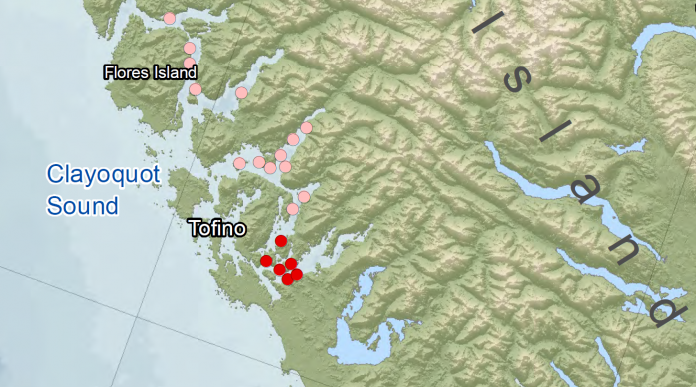As Cermaq acts and greens point fingers, Canadian science struggles to come to grips with sea lice
Sea-lice counts at some Cermaq grow-outs in British Columbia have exploded in 2018 and, as the company takes action, so too are the province’s salmon-farming’s opponents using the unusual spring outbreak to again target the industry.
The company’s voluntary self-reporting offers some contrast to the Department of Fisheries and Oceans’ own stated peak period for lice, which is early fall. The discrepancy brought another mainstream media volley.
At Cermaq Canada’s Millar Channel sea farm — a BC marine grow-out on the Western side of Vancouver Island — the lice count began spiking in mid-February. By early April, the company’s own count had reached 30 lice per fish, and some five other area farms were reporting high levels of lice.
The high count triggered a mandatory response for the company: they could harvest or they could treat. Cermaq chose to secure amounts of peroxide or pesticide mandated by regulators.

Pacific sea lice
With the count 10 times the allowable number in Canada or Scotland, where low lice limits are in-place to protect wild populations, some believe wild juveniles now heading downstream and out to sea are at particular risk due to farmed fish. Others — and here’s where Canadian scientists are divided — believe wild salmon returning from sea in fall carry the most lice, a fact born out by numbers that spike in the fall.
“The number of wild, out-migrating juvenile salmon carrying a sea louse varies considerably year by year and by geographic location,” a recent report on Canadian salmon-farming by Canadian Environment Commissioner, Julie Gelfand, recently acknowledged.
“Returning salmon, carrying sea lice from their ocean migration, have been known to become a source of sea lice in the autumn months, and annual trends in the rise and fall of sea lice numbers on net-pen farm salmon are predictable.”
Gelfand’s science council of critics and neutrals noted there were two types of sea lice — Lepeophtheirus salmonis (leps) and Caligus clemensi (Caligus) — and Canadian fish farms “actively manage” only the first of these (although there are many species of Caligus). There’s no word on which caused the sudden spike in spring sea lice counts at farms in Clayoquot Sound off western Vancouver Island, an area that receives the brunt of whatever the Pacific Ocean is carrying.

Caligus
With Canadian environmentalists circulating photos this week of wild juvenile salmon covered in lice, it’s clear none are certain what type of lice they are or where they came from.
“Again, the extent of harm to wild B.C. salmon populations from sea lice is unknown, but several presentations to the council contained correlational information regarding louse impacts on wild salmon. The council heard that Caligus sea lice can impair feeding and growth of wild salmon and increase predation risk.
“The council heard presentations that sea lice posed a threat to wild Pacific salmon. However, we were also informed that continued investment and research, changes in area management of farms to limit production consistent with the abundance of wild salmon, and greater emphasis on the restoration of healthy, abundant wild Pacific salmon populations should be pursued to help address the concerns.”
Advice
To tackle the “conflicting science”, Ottawa will set up an independent science council to look at lice and other issues. In the meantime, this was the Commissioner’s main recommendation on sea lice.
“Continue monitoring sea lice levels on B.C. salmon farms and on juvenile wild salmon; monitor populations of wild salmon in proximity to salmon farms and test on a regular basis the effectiveness of treatments in controlling sea lice levels and for resistance to sea lice therapeutants.”
For now, Cermaq Canada has permission to use the wellboat method of lice treatment at 14 farms in six locations. Before the treatments, Cermaq’s own farmed salmon had been doing well, and the company had only just reported its survival rates last year had risen to 96 percent from 94 percent in 2016.











